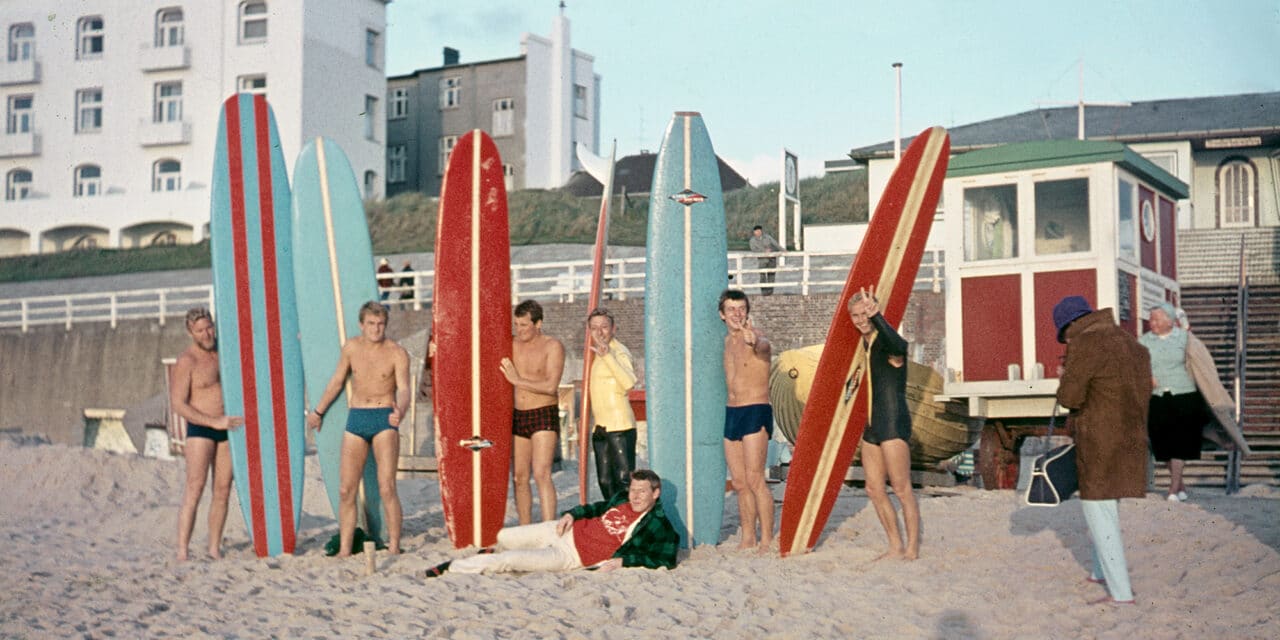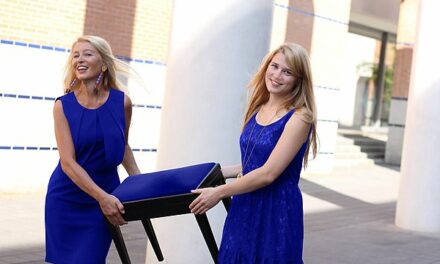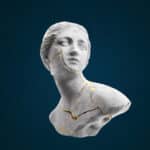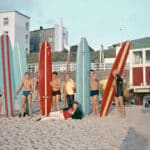Sylt is known for many things, but not necessarily for being the birthplace of German surfing. Two people from Sylt want to change that. With their exhibition "SPF52 Surf + Strand Kultur Sylt" at the Sylt Museum, Angelo Schmitt and Dennis Bullen look back on the fascinating history of surfing, which goes back more than 70 years and should shape the island more sustainably than almost any other sport. They see the exhibition as a "tribute to the pioneers of the waves" who brought the surf spirit to Sylt and filled it with life.
"The development of surfing and the associated beach culture is immensely important for Sylt's recent history and has not yet been fully known to the public – we want to change that with this exhibition," says museum director Alexander Römer, who developed the exhibition together with Angelo Schmitt and Dennis Bullen. As early as 1952, the first waves were surfed off Sylt – in diving suits or without neoprene on slippery and bulky wooden planks. Closely linked to surfing and for over 150 years also part of Sylt's beach culture are the island's lifeguards, who then as now ensure the safety of people in and around the water.
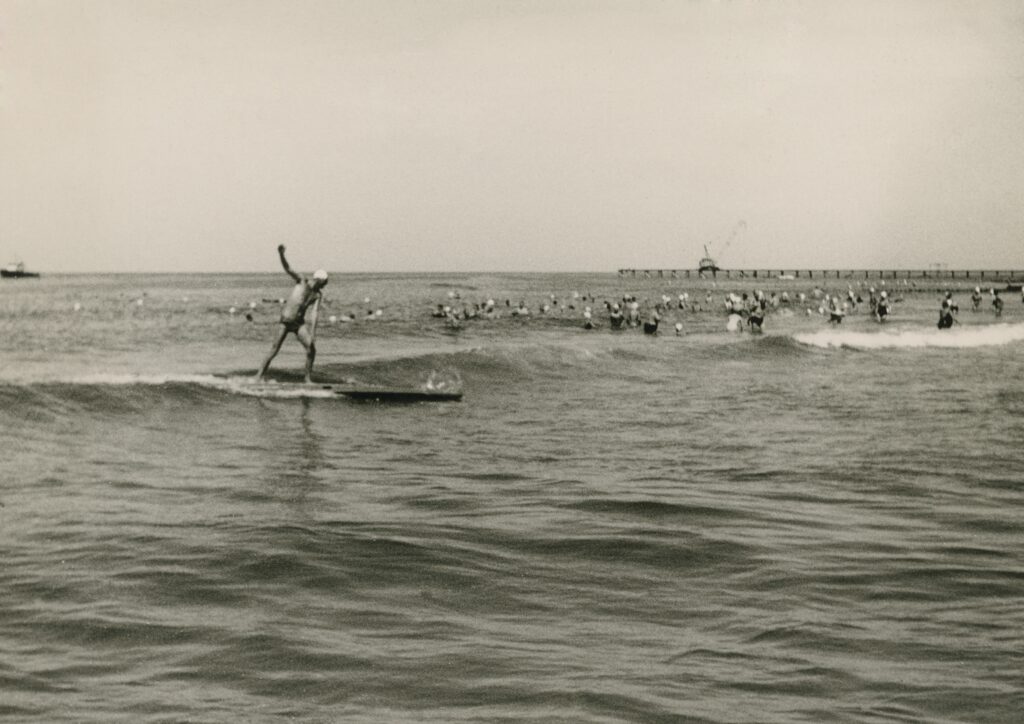
Pioneer of the waves: Uwe Drath surfed the first waves off Sylt in 1952 with his more than three-metre-long rescue board. © Archive Drath
With his discovery, Uwe Drath is considered a surfing pioneer in the scene
They were also the ones who tried to ride the first waves off Sylt in the early 1950s. First and foremost, the lifeguard clique around Uwe Drath, Uwe Behrens and Falk Eitner. During the day, they watched over the beach and waves from their lookout posts in the wooden cart houses, and after work they converted their rescue boards into surfboards. In 1952, the then 28-year-old Uwe Drath was the first to venture into the North Sea surf with his three-metre-long rescue board to surf – without a leash, fin or the faintest idea of take-off. But with the very best of intentions: He wanted to impress his spa shadow in front of the astonished backdrop of Westerland's main beach. Soon the first real surfboards were ordered in Biarritz, France, and the long-awaited wetsuits also found their way to the island – much to the delight of lifeguard colleague Jürgen Hönscheid. In the mid-seventies, he won the first international surf competition in windsurfing on the beach section of Seenot. As a result, windsurfing became more and more popular and Westerland was to become the most important tour stop of the Windsurf World Cup Sylt in the coming years. With the wave forecasts on the World Wide Web, the surf hype then spilled over from the mainland to the surf spots of the island. From then on, more and more holiday and day visitors tried to catch the short time window in which waves and wind fit together perfectly.
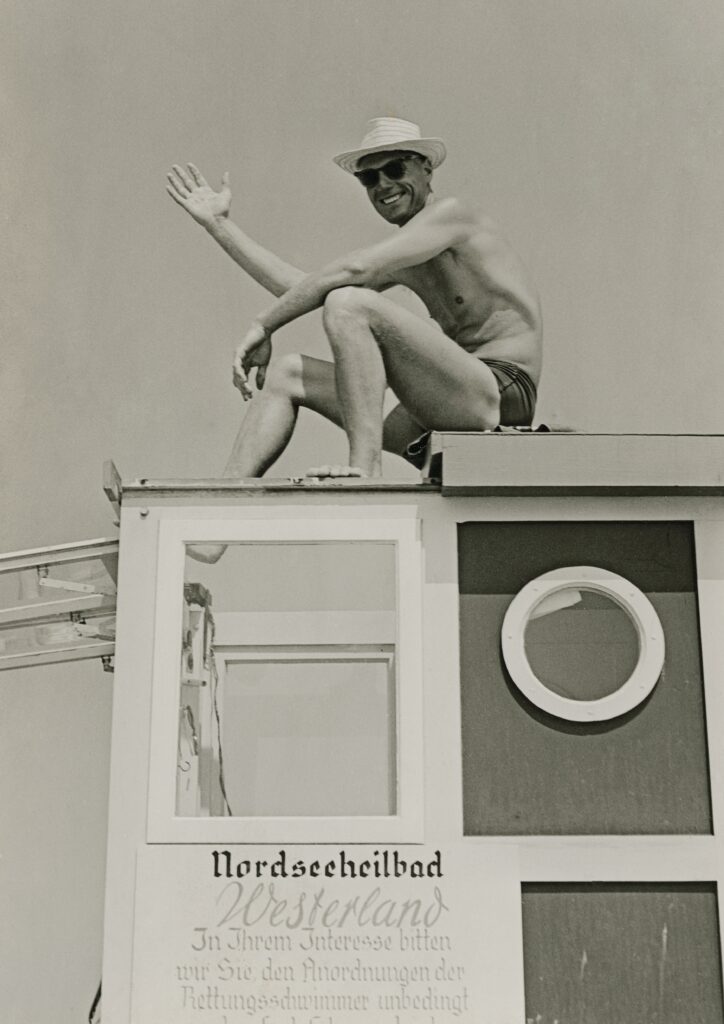
Workplace with a view: Uwe Drath worked on the beach from 1950 to 1990, first as a lifeguard and later as a pool manager. © Archive Drath
Three decades of surf and beach culture at the Sylt Museum
As a passionate surfer and former lifeguard, Angelo Schmitt knows about the interplay of wind and waves and the importance of surfing for the island. "Surfing here is no longer just a water sport, but a cross-generational way of life, a shared mentality and now an integral part of the island's cultural heritage." Together with Dennis Bullen and Alexander Römer, he organizes and curates the exhibition "SPF52 Surf + Strand Kultur Sylt", which can be seen from May 5 at the Sylt Museum in Keitum. The name says it all: SPF stands for sun protection factor, 52 for the year of the first wave surfed on Sylt. "SPF52" offers no protection against sunburn, but it does offer a rich fund of props and exhibits. "In this year's exhibition, we are initially limiting ourselves to the 50s, 60s and 70s – the collection is too extensive, the upscale treasures too valuable, for us to be able to pack over 70 years of surfing history into one exhibition," explains initiator Dennis Bullen. Exhibits include boards and surf equipment, as well as rescue gear and equipment such as horns and leashes from three decades. In addition, there are interviews with the surfing pioneers as well as photos and "Super 8" recordings from private collections and from the Sylt archive.
In the meantime, surfing on Sylt has become a firmly established passion that has been lived by a wide variety of generations. Angelo Schmitt describes it this way: "The surfing conditions haven't changed since Uwe Drath's first attempts at surfing, but the surf stoke on the island is higher than ever before – whether it's the gloomy winter or full summer." Sounds like a perfect wave in the Sylt line-up.
5 May 2024 to 5 January 2025
www.soelring-museen.de
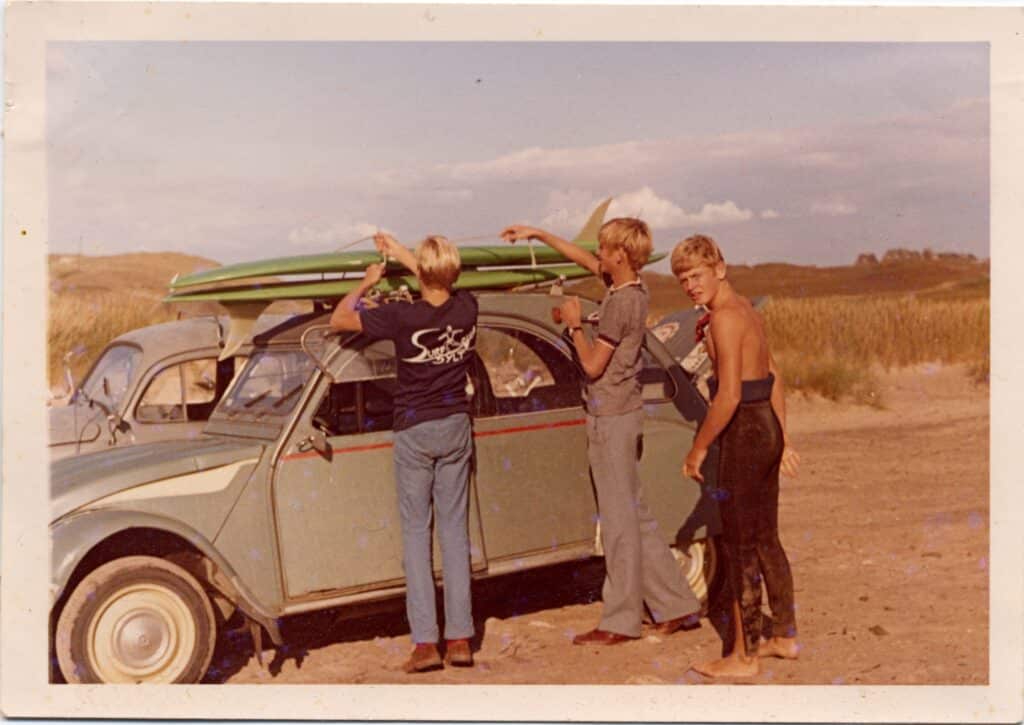
In the 1970s, the boards became shorter and the young surfers around Jürgen Hönscheid more mobile. © Archive Hönscheid

